Millets have fed far more of the world than the familiar, large-grained cereals such as wheat.”
—Fruit from the Sands: The Silk Road Origins of the Foods We Eat, by Robert N. Spengler III.

Though from late 7th century China, the shape of this gorgeous amphora shows Iranian influence. It’s a tangible demonstration of the wide, frequent movement and mingling of peoples across the wide expanse of the Asian continent and beyond on the Silk Road. Ancient grains such as millet and sorghum were traded along with spices, wine and objects like above. Globalization has been around forever.
Millet/sorghum/: little dots of fuel and protein that built kingdoms and empires. They’re wild grains that fueled harsh lives with a nutty taste, versatile uses and complete nutritional profile (including protein). They were instrumental in the survival and growth of the human population in at least half of the world.
These grains were so influential to human history because they’re hardy, drought-resistant and bountiful. According to the book I cite above, they seem to be designed to feed humans efficiently. They have a shallow root system, which meant plowing and farming equipment was not necessary or minimally needed. Even the small size of the grains means they need less fuel to cook.
But now these grains have fallen out of favor, and we mostly eat wheat and rice as the basis for our diets. Sorghum’s biggest use now is to produce liquor in China. Millet is often used in bird seed.

I understand why. The truth is, these grains don’t go down easy. If rice is a session lager, millet is a stout. It needs getting used to, and it’s consumed slower, in smaller amounts. Millet and sorghum are hearty and toothsome and tough. Wheat and rice taste better and are easier to eat.
I think we’ve over-corrected in our shift to rice and wheat though, and now we’re missing out on star ingredients that are filling and nutritious, that release lots of energy slowly over time. We’re missing out on nutty, earthy, grassy tasting notes and nubby textures.
Now, we have an opportunity to create demand for climate-smart, regenerative millet and sorghum. And we don’t have to eat these grains out of guilt or to signal virtue. We can do so because they make our bodies feel good and they taste good. How?
Here, a little magic trick to make ancient grains more palatable – the ancient practice of fermentation.
Fermented batter
Fermenting sorghum and millet is versatile and easy, as well as a tale as old as time. First, submerge the grain in cold water (I used about two cups). Cover bowl and leave overnight or at least eight hours. The drain the bowl, leaving some water in– roughly in a 1:1 ratio. Sorghum + water = batter.
Then blend! Blender works best. I have a little food processor and that worked fine too, it just took longer. You can add more water if needed, and you can drain again if it’s too liquid-y. Then leave for at least eight hours, depending on the climate of where you live. Here in New York, the temperature is finally starting to drop. I found eight hours/end of day wasn’t enough so I left it overnight another day. The next morning, I had a little moment: ahh — now, this is fermented batter! It smelled like sourdough. Do you see the bubbles?
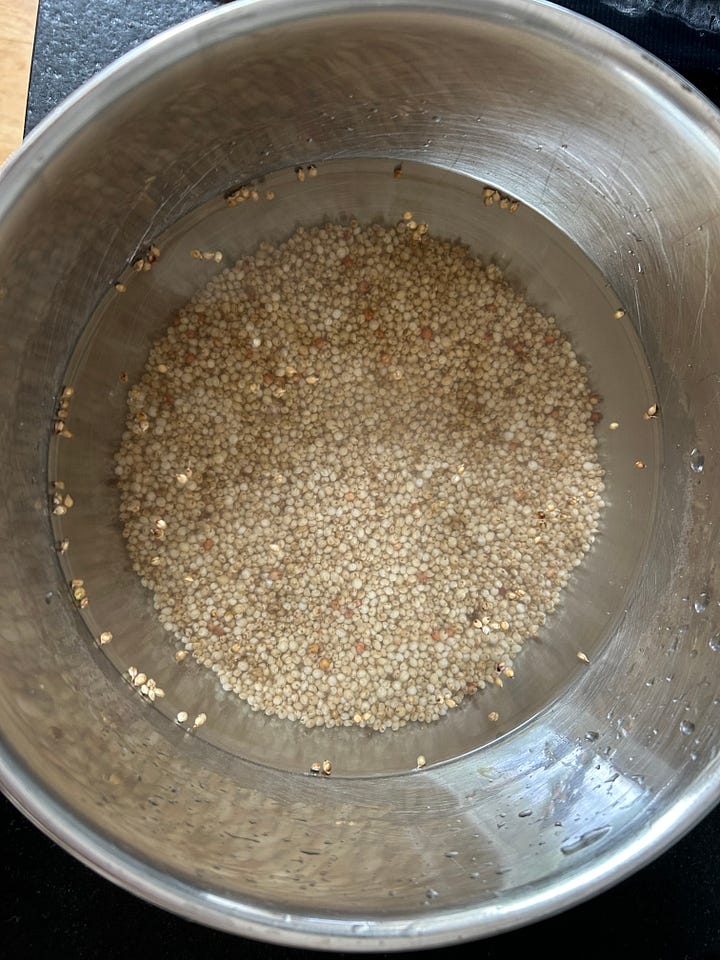
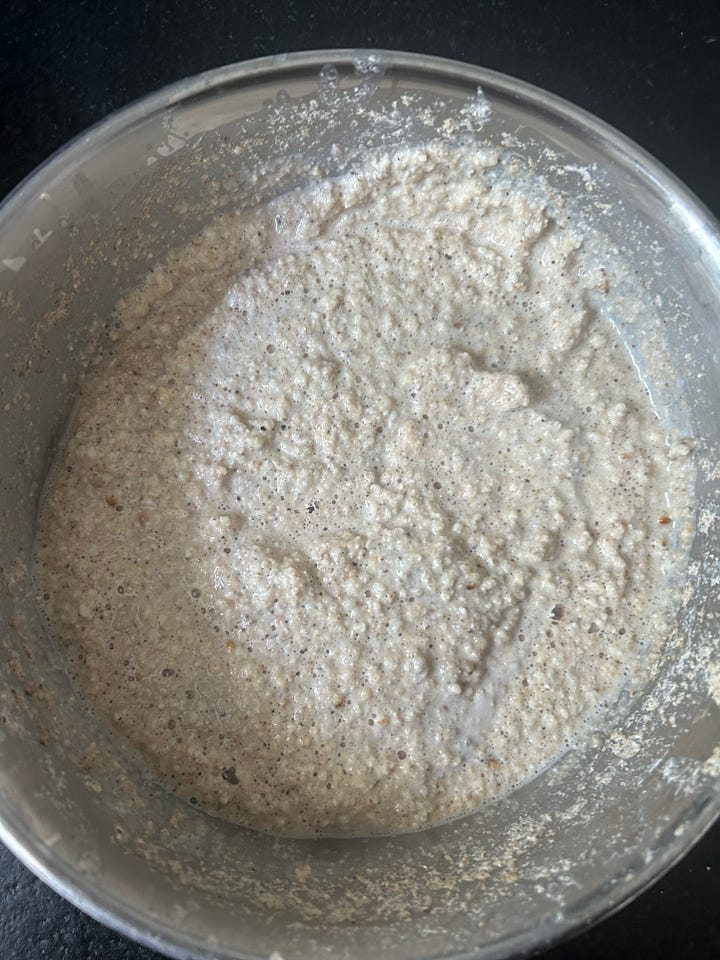
The resulting batter can be used to make dosas, kisra, ambali and much more. Or:
Tomato pie
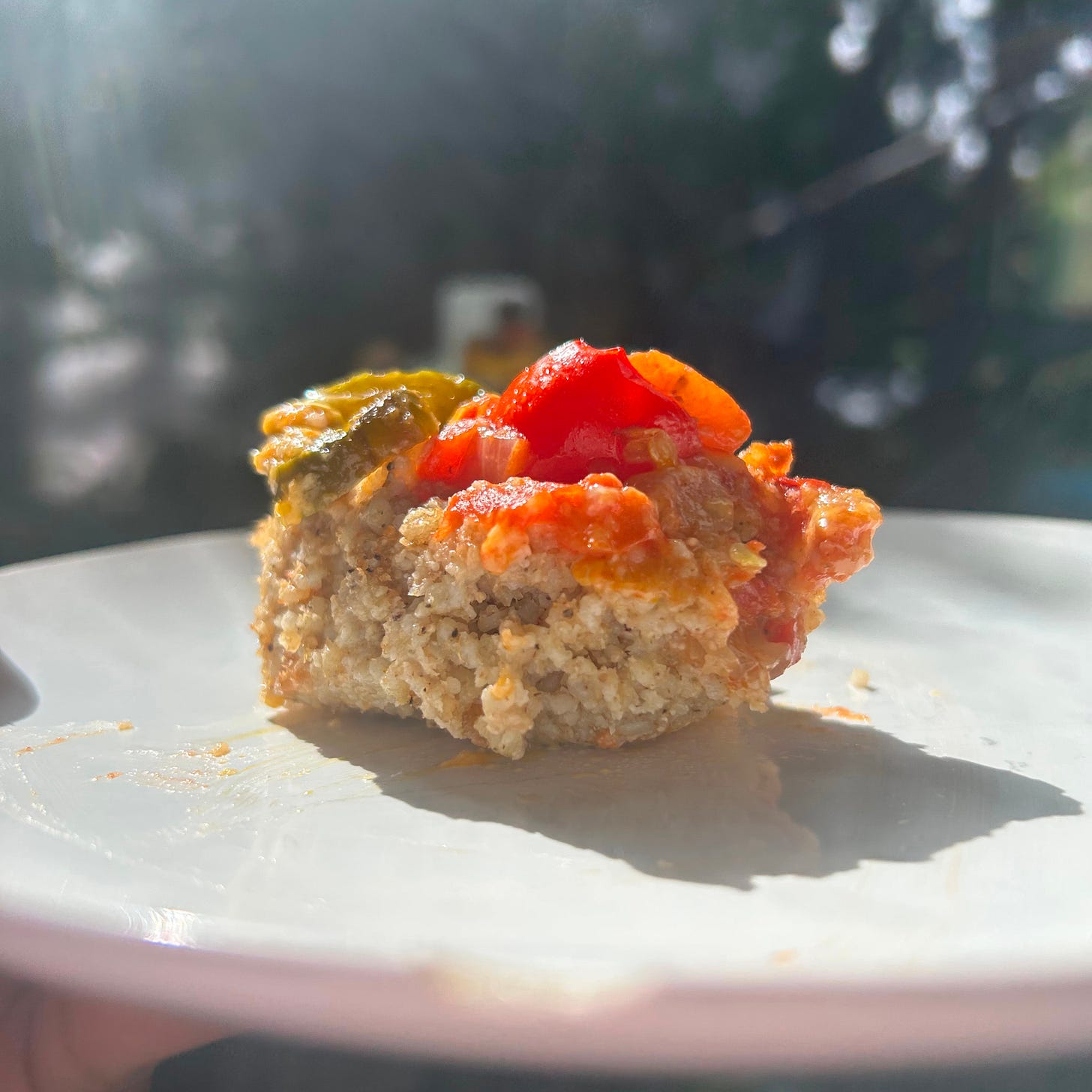
Tomato pie is not pizza. This is a fun fact I learned last year or so. In case you’re also unfamiliar, it’s a Southern dish in which cheese, tomatoes and herbs are baked into a buttery pie crust. Yum. I’m excited to incorporate ancient grains into this all-American dish, the antithesis of basically everything I’ve discussed up ‘til now.
This recipe is basically slice and pour and wait. I poured the fermented batter in a lightly oiled casserole dish, then baked in an oven at 400°F/204°C for 20 minutes. It started solidifying at the top and at the edges, which was fun to see in this experiment. Then I covered the top with sliced tomatoes and jalapeños, which I had lightly mixed with olive oil and salt, and then baked for another 15 minutes. Finally, I put diced cheddar cheese on top, lowered the temp to 350°F/177°C and baked for another 30 to 40 minutes.
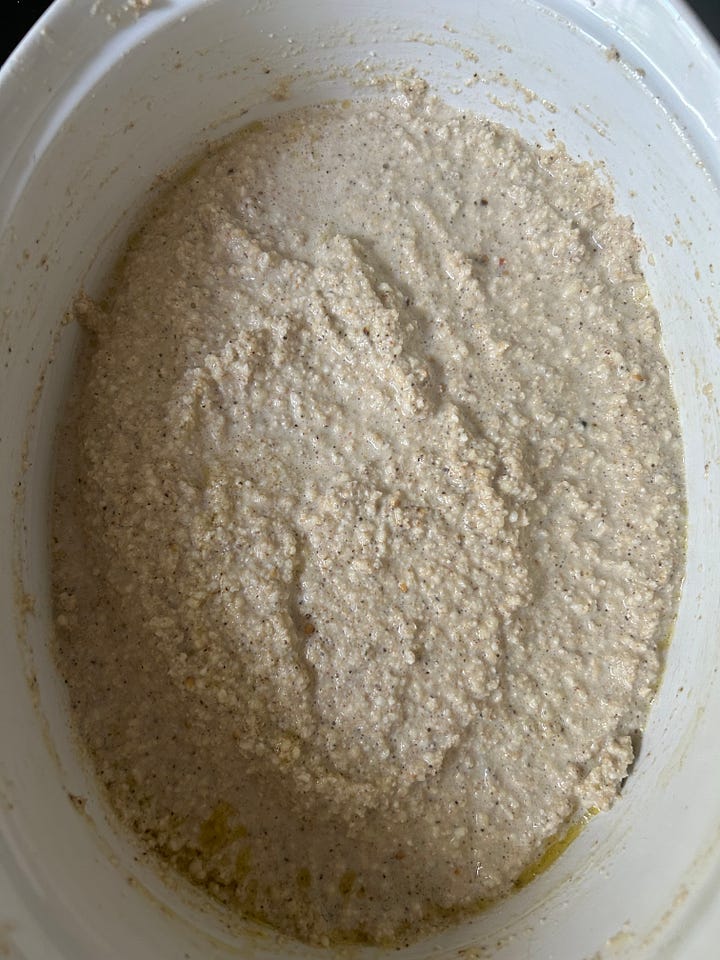
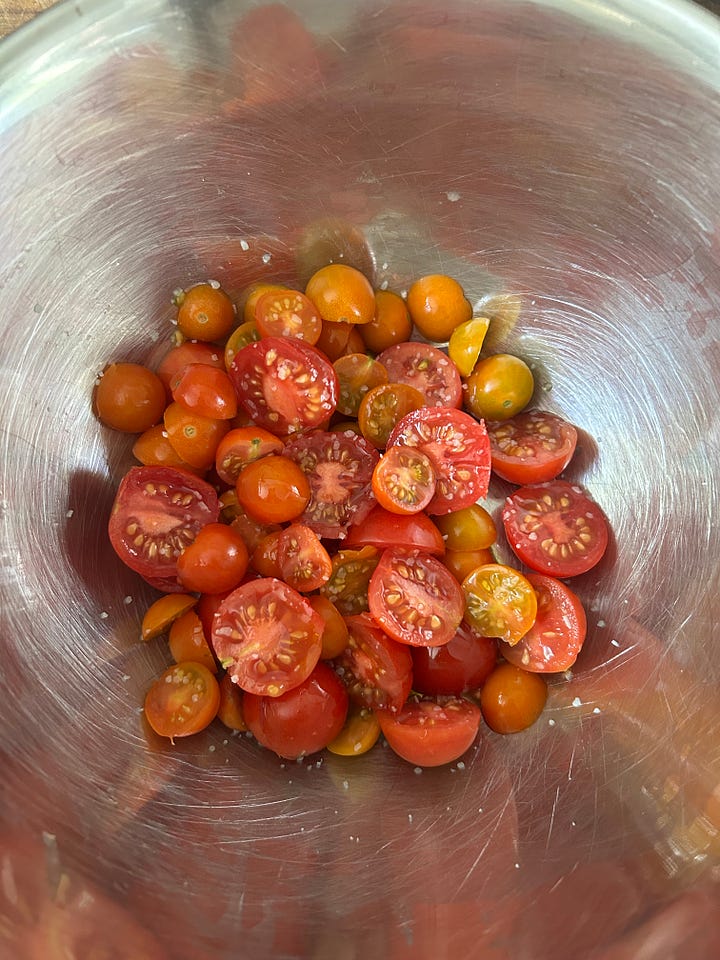
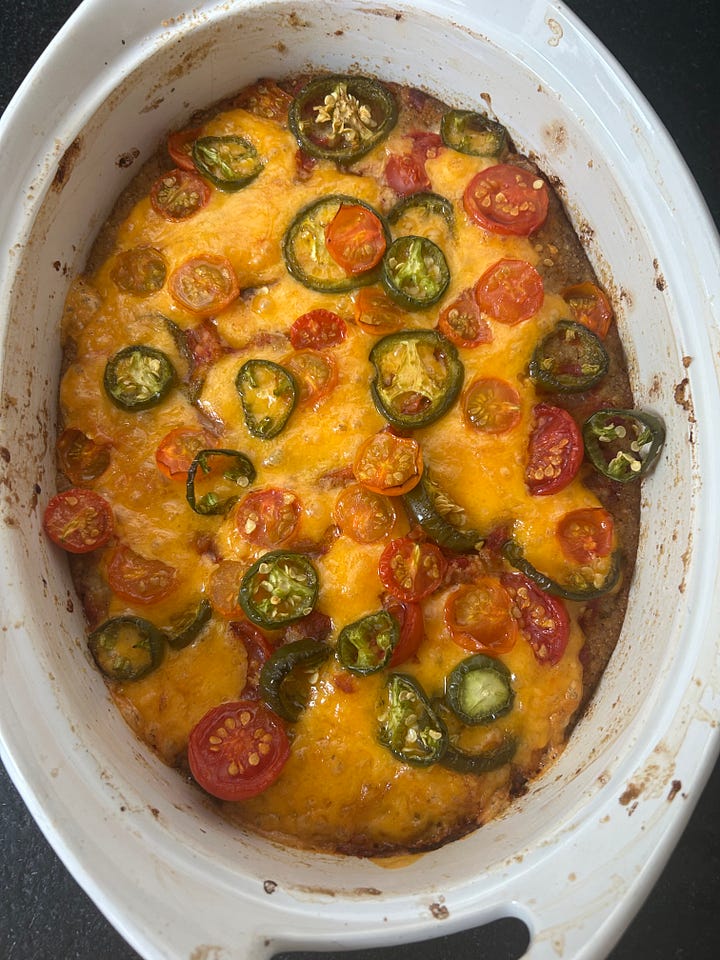
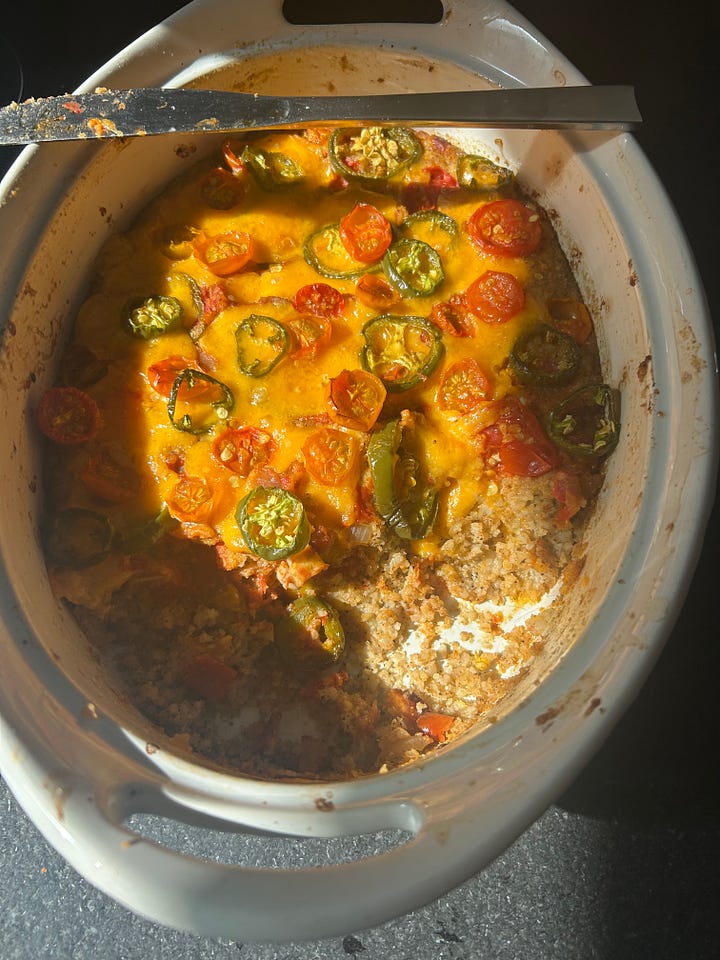
I’m very happy with the way this came out. Before this pie (or I suppose, casserole), I made muffins with the batter, which looked great, but were too dry. In this pie, the sliced tomatoes on top released their juices into the batter, keeping the pie moist. It’s cheesy, gooey, cozy, with a wholesome foundation. Party on top, vigorous fall hike on the bottom. Both are pleasurable for different reasons.
Newsfeed
I love the idea of a community cannery.
Via
, the U.S. is losing soil at an unsustainable rate. FoodPrint details one intriguing solution involving recycled glass.Via
Ink, meet the ABCDs, the multinational food conglomerates that control a disturbingly high percentage of the food we grow, sell and consume. One of them is the Louis-Dreyfus family. Sound familiar? Yes – Julia Louis-Dreyfus. This food industry concentration is a dangerous problem of global proportions.Via
: “Cities in Fiction,” a database of South Asian fiction, grouped by the cities in which they’re set. Can’t wait to dive in!I’m intrigued by koshari, an Egyptian rice-and-lentils dish with influences from India (see: kichidi, which we had once or twice a week growing up) and Italy.
Li’l Nubs:
It’s spooky season, and I’ve been uncharacteristically wading beyond the cozy murder category into the realm of the truly scary. Starting with Jennifer’s Body, which was carried from beginning to end by Amanda Seyfried. She was captivating. Let me know if you have “If you liked Jennifer’s Body, you’ll like XX” recommendations!



